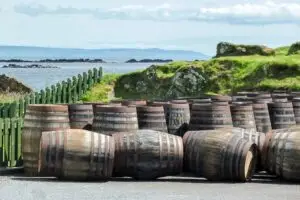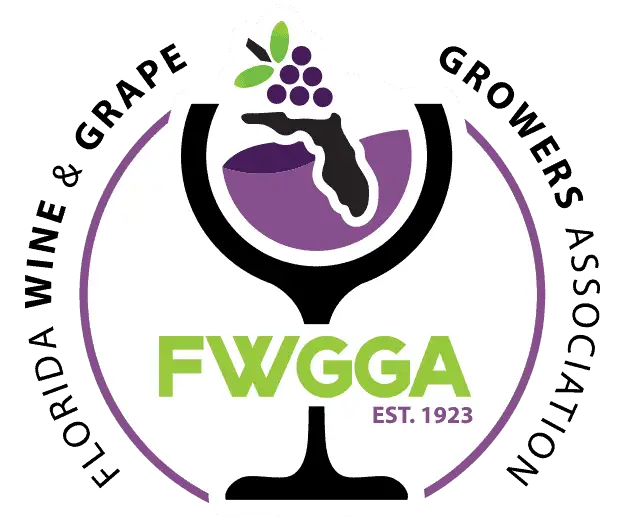Ocean cask whisky refers to spirits that are aged in environments influenced by the sea or ocean, either directly on vessels at sea, underwater, or in coastal locations where marine conditions affect the maturation process. This unique aging method has gained significant attention in the spirits industry for its ability to impart distinctive flavors and accelerate the maturation process in ways traditional warehouse aging cannot achieve.
Historical Context
The practice of aging spirits at sea has historical roots dating back centuries. Before modern transportation methods, whiskey and other spirits were commonly transported in barrels via ships, inadvertently exposing them to maritime conditions during their journey from distilleries to markets. What was once a necessity has evolved into a deliberate production technique, with distillers around the world now purposefully utilizing oceanic environments to enhance their spirits.
One of the longest-running examples of maritime-influenced spirits is Linie aquavit, which crosses the equator twice during its maturation journey. However, it’s primarily whiskey producers who have embraced and marketed this technique in recent years, recognizing the unique characteristics that ocean aging can impart to their products.
Types of Ocean Aging
There are several distinct approaches to ocean cask whisky production:
1. Ocean Voyage Aging
This method involves placing barrels of whisky on ships that traverse oceans, exposing the spirits to the constant motion of the sea, variable temperatures, and maritime air. Jefferson’s Ocean Aged at Sea bourbon, which debuted in 2012, pioneered this modern approach. The barrels typically spend four to six months at sea, traveling through both the Pacific and Atlantic Oceans.
Trey Zoeller, Jefferson’s founder, explains that three main factors affect the whiskey during ocean aging:
– Increased wood contact due to constant motion
– Intense caramelization of wood sugars, especially when crossing the equator
– Salt air penetration, which adds saline notes to the whiskey
Each voyage produces unique results depending on seasonal and weather conditions. For example, Zoeller recalls “voyage 13” encountering three named hurricanes in the North Atlantic, resulting in significant evaporation (only 36% yield) but creating an extremely briny and concentrated bourbon that became highly sought after.
2. Underwater Aging
Some distillers take ocean aging a step further by submerging barrels or bottles directly underwater. Benjamin Kuentz’s Maison Benjamin Kuentz ages French whiskies underwater at a depth of 65 feet off the coast of Brittany, France, producing their Uisce de Profundis amber-gold whiskey.
Kuentz describes the underwater aging process as transformative: “I was surprised when I tasted the magical flavors I had discovered after a one-year finishing process of my bottles under the ocean. Actually, changing pressure brings specific aromas and texture coming from the sea.”
Other examples include Emperor Deep Blue rum, which ages bottles (not barrels) for six months at depths of 200 feet near offshore islands in Brittany, and Baleia gin from the Azores, which ages bottles in the Atlantic Ocean with no set time limit.
3. Coastal Distillery Aging
A third approach involves aging whisky in coastal locations where the marine environment influences the maturation process without direct submersion or sea travel. Rogue Spirits Distillery in Newport, Oregon, pioneered this technique, which they call “ocean aging.”
Unlike traditional whiskey aging that relies on heating and cooling systems to extract flavors from barrels, Rogue’s distillery sits less than 50 yards from the Pacific Ocean. Their barrel room experiences minimal temperature variation (within a 10-degree range year-round), but they take advantage of the Pacific Northwest’s consistent climate, fresh ocean air, and barometric pressure shifts from coastal storms.
By simply opening the doors to their barrel room, they allow the shifting barometric pressure to push whiskey in and out of the wooden barrels. On low-pressure days, the whiskey re-permeates the barrels, fostering a unique flavor profile over time. The mild coastal climate also helps avoid excessive evaporation or “angel’s share,” preserving the whiskey’s integrity.
Effects on Flavor and Maturation
Ocean cask aging produces several distinctive effects on whisky:
Enhanced Wood Interaction
The constant motion of ocean travel or the pressure changes in underwater environments increase contact between the spirit and the wood. Carl O’Grady, who ages whiskey in a former ferryboat moored in Clare Island’s harbor in Ireland, describes it as “effectively like a washing machine” with “a hell of a lot more interaction between the liquid and the wood, obviously, because it’s constantly agitated.”
This increased interaction accelerates extraction of compounds from the oak, potentially achieving in months what might take years in a traditional warehouse. As Zoeller explains, “That constant contact with the wood brings out color, it brings out more flavor,” while also increasing the filtering effect of the charred oak, reducing the whiskey’s astringency.
Temperature Fluctuations
Ocean-aged whiskies experience unique temperature patterns. For barrels stored in shipping containers on vessels, the temperature can be significantly higher than the outside air, especially when crossing the equator. Zoeller notes this creates “intense caramelization” of the barrels’ wood sugars, adding both flavor and viscosity to the bourbon.
Conversely, underwater aging typically occurs at cooler, more consistent temperatures than land-based warehouses. These cooler temperatures, combined with changes in depth and hydrostatic pressure, seem to accelerate the maturation of liquors while imparting more complex flavors.
Maritime Character
Perhaps the most distinctive aspect of ocean cask whisky is the maritime character it develops. Salt air penetrates the barrels during ocean voyages, adding saline notes to the whiskey. This effect is particularly pronounced in underwater aging, where the characteristic note is often described as a briny salinity.
The maritime influence is so significant that Benjamin Kuentz recommends pairing his ocean-aged whisky with seafood, highlighting the complementary flavors.
Accelerated Maturation
Multiple producers report that ocean aging seems to accelerate the maturation process. The combination of motion, pressure changes, and unique temperature patterns allows spirits to develop complexity in less time than traditional aging methods. This acceleration is particularly valuable in an industry where time directly impacts production costs and inventory management.
Challenges and Considerations
Despite its benefits, ocean cask aging presents several challenges:
Regulatory Hurdles
In some regions, regulatory frameworks haven’t caught up with these innovative aging techniques. O’Grady’s Clare Island spirit meets European standards for whiskey but cannot be labeled as “Irish whiskey” because his boat is not considered a bonded warehouse, a requirement for Ireland’s whiskey geographical indication (GI).
Similarly, legal prohibitions for underwater wine aging in the United States have discouraged undersea liquor aging in America, despite the technique’s popularity in Europe.
Practical Difficulties
Ocean aging presents unique logistical challenges. Barrels on ships cannot be monitored as they would be in a warehouse, leading to potential issues like leakage. Zoeller has experienced opening shipping containers to find leaky or empty barrels, with damage going unrepaired during the maturation period.
For underwater aging, the salt water can corrode the iron hoops of barrels. O’Grady’s wife developed an organic wax to coat cask hoops and prevent damage from the corrosive effects of seawater.
River-based aging presents its own challenges. Hank Ingram, who ages whiskey on a barge at the confluence of the Ohio and Mississippi Rivers, spent three years convincing the Alcohol and Tobacco Tax and Trade Bureau (TTB) to license his barge as a bonded warehouse. The enclosed design of the barge creates unique hazards, as “the vapors that come out of the barrels, the angel’s share, are heavier than air,” requiring a system of fans and vents to prevent explosion risks.
Cost and Yield Considerations
Ocean aging can result in higher evaporation rates than traditional warehouse aging. Jefferson’s “voyage 13,” which encountered three hurricanes, had only a 36% yield due to the extreme conditions. This increased loss must be balanced against the premium pricing these unique products can command in the marketplace.
Notable Producers and Products
Several distilleries have become known for their ocean-aged offerings:
Jefferson’s Ocean Aged at Sea
One of the pioneers in modern ocean-aged whiskey, Jefferson’s places barrels of bourbon on ships for voyages lasting four to six months. Each “voyage” release varies based on the specific conditions encountered at sea, creating collectible batches with unique characteristics.
Clare Island Spirit
Carl O’Grady ages new-make single malt spirit from Connacht Whiskey Company in the Dolphin, a restored 36-foot wooden-hulled vessel moored in Clare Island’s harbor in Ireland. The boat’s hold always contains some seawater, creating a unique aging environment that produces a distinctive maritime character.
Kaiyo Whisky
This Japanese producer emphasizes the “sea voyage” as a key part of their whisky’s character, with their website highlighting the “distinct and extraordinary aging effect” infused into their whisky as a result of sea maturation.
Rogue Dead Guy Whiskey
Rogue Spirits Distillery in Newport, Oregon, uses their coastal location to naturally extract oak flavors from barrels without forced temperature changes, a process they call “ocean aging.” Their proximity to the Pacific Ocean allows them to use natural barometric pressure changes to enhance the interaction between whiskey and wood.
Uisce de Profundis
Benjamin Kuentz’s underwater-aged French whisky spends a year at a depth of 65 feet off the coast of Brittany, developing what Kuentz describes as “magical flavors” from the sea.
Conclusion
Ocean cask whisky represents an innovative approach to spirit maturation that combines historical transportation methods with modern understanding of how environmental factors affect aging. Whether through ocean voyages, underwater aging, or coastal distillery locations, the maritime influence creates distinctive products with unique flavor profiles that cannot be replicated in traditional warehouses.
As O’Grady notes, “It was never about creating the best whiskey in the world. It was about creating something different and something that nobody else can replicate.” This pursuit of uniqueness, coupled with the genuine effects of maritime environments on spirit maturation, ensures that ocean cask whisky will likely remain an intriguing category for both producers and consumers in the years to come.
References
1. VinePair. (2022, February 2). “Ocean-Aged Whiskey Is Not Just a Gimmick.” https://vinepair.com/articles/ocean-aged-whiskey/
2. Food Republic. (2023, December 11). “Why More Distilleries Are Aging Liquor Underwater.” https://www.foodrepublic.com/1460377/why-distilleries-aging-liquor-underwater/
3. Rogue. (2025, March 26). “Behind the Scenes of Rogue’s Ocean Aged Whiskey Process.” https://www.rogue.com/ocean-aged-behind-the-scenes/
4. Whisky Advocate. (2024, March 26). “Cask Away: The Voyages of Ship-Aged Whiskies.” https://whiskyadvocate.com/Cask-Away-The-Voyages-of-Ship-Aged-Whiskies
5. Kaiyo Whisky. “Sea Voyage.” https://kaiyowhisky.com/sea-voyage



